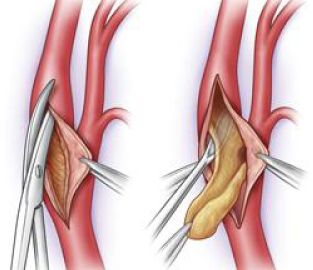A subset of hypertension patients has hypertension that is caused by vascular disease, i.e., arterial blockage or narrowing in the renal artery. This renovascular disease causes decreased blood flow to the kidney, which results in systemic (body-wide) constriction of the blood vessels, causing a rise in blood pressure.
Treatment
Interventional radiologists can accurately diagnose renovascular disease. If medical management-medications and lifestyle changes-are insufficient, Interventional Radiologists can perform angioplasty and, if needed, stenting, to improve blood flow to the kidney.
Interventional radiologists also play a role in treating patients with renal failure. In these patients, revascularization with angioplasty has gained acceptance as a treatment to improve or stabilize renal function, with improvement seen in approximately 40 percent of patients.

Renal artery stenting is a procedure to open the renal arteries – the large blood vessels that carry blood to the kidneys – when they have become blocked due to renal artery stenosis (narrowing of the renal artery). This is most often caused by atherosclerosis or fibrous disease of the arteries. When a renal artery is clogged, blood flow to the kidneys is affected. Stenting opens the blockage and restores normal blood flow.
The kidneys help to control the amount of salt and fluid in the body by filtering blood and making urine. When the blood cannot get to the kidneys to remove salt and water, fluid builds up in the body. In addition, the kidney releases a hormone called renin that promotes the retention of salt and water and also causes the blood vessels in the body to become more rigid. Together, this results in a type of high blood pressure called renovascular hypertension. High blood pressure puts extra strain on the heart and other organs. Renovascular hypertension can also cause kidney failure, which can lead to dialysis or a kidney transplant.
The prevalence of renal artery stenosis is increased in diabetics with high blood pressure and in those with known coronary and peripheral arterial disease. Duplex ultrasound or magnetic resonance angiography (MRA), as well as other imaging tests can, be used to non-invasively suggest the diagnosis but the gold standard is conventional renal angiography. Catheter-based endovascular treatment options include balloon angioplasty alone (usually reserved for cases of fibromuscular dysplasia) and more commonly angioplasty with stenting both with the goal of improving blood flow to the affected kidney which may ultimately aid in long-term blood pressure control and improving kidney function.
